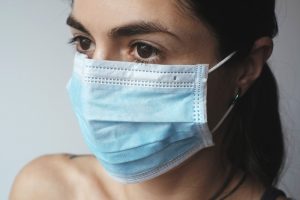Here’s What the Claim that Schools Aren’t Superspreaders Fails to Address
. Posted in COVID-19, News - 0 Comments
Despite the popular Atlantic article that claims early COVID-19 data seems to show schools can safely reopen, many worrisome questions still remain. The article flatly denies that schools are superspreaders in spite of new reports from the CDC noting that 90% of Americans live in counties falling into the two highest risk categories for reopening schools. Additionally, the American Academy of Pediatrics is showing a rapid rise in pediatric COVID-19 cases over the last six months, not to mention an alarming 14% increase in children with COVID from Sept. 17 to Oct. 1 as schools began to reopen.
While the article’s arguments come directly from authoritative data, they are also startlingly brash conclusions in light of where the numbers come from, how many of them there are, and the disease’s plainly fatal potential. While the data may be viewed on an online dashboard programmed by stats-software company Qualtrics under direction from Oster, the article’s author, it actually comes from “a group of educators from superintendents’ and principals’ associations who had access to schools.” In other words, it comes from administration officials from the principal upward, all of whom have every reason to want schools open ASAP.
 That data would be better informed by including numbers from other sources such as teachers’ unions and associations, as evidenced by cases reported to newspapers by teachers in COVID-fraught districts where testing isn’t mandatory. Schools aren’t superspreaders only if you don’t count the teachers–but how can you not? This is the case with the New York City Department of Education, where parents might never have known about faculty infections except that teachers tested themselves and informed their union, who then went to journalists without involving admin officials.
That data would be better informed by including numbers from other sources such as teachers’ unions and associations, as evidenced by cases reported to newspapers by teachers in COVID-fraught districts where testing isn’t mandatory. Schools aren’t superspreaders only if you don’t count the teachers–but how can you not? This is the case with the New York City Department of Education, where parents might never have known about faculty infections except that teachers tested themselves and informed their union, who then went to journalists without involving admin officials.
It’s also important to note that the incomplete data surrounding COVID-19 continues to be a huge problem. While private schools haven’t been included in the above numbers because they don’t belong to public districts, they are included in the NEA’s tracker. This brings us to the next issue with Oster’s claim, her admittedly lacking sample from private schools. She writes of this that “private schools have little or no reporting requirements for coronavirus, but in many locations they are the only ones to open. These private schools are an opportunity to learn about what might happen when public schools open in these areas, but only if we have data.”
How much of the picture are we missing, then? Oster downplays the importance of including these schools in her data, saying, “Private schools … have lower infection rates, which seems to reflect, at least in part, their demographics and the fact that they do more mitigation.” And while it’s certainly true that COVID inordinately affects the poor, private students clearly need representation if her data is to represent the population. Those students need representation much more than, say, schools with zero infections. Clean schools don’t tell us whether in-person education results in superspreaders. They just water down the infection rate among all school-going persons. Nevertheless, 100% COVID-free schools are clearly included in her data.
Oster’s reputation is solid, and her tireless enthusiasm for objective analysis verifiable all over the internet. While Oster’s assertion seems founded on hubris in early fall 2020, the careful skeptic shouldn’t be surprised if she comes to admit more comprehensive evidence trumps her premature claim in the end, if indeed that’s how it shakes out. Nevertheless, it’s clear we need to inform ourselves about superspreaders and make better decisions about school reopenings during the COVID-19 pandemic.
Are you concerned about sending your child to school? Academic pods are a viable alternative. Click here to view information about pods from Boston Tutoring Services.
Allison Green
Boston Tutoring Services
